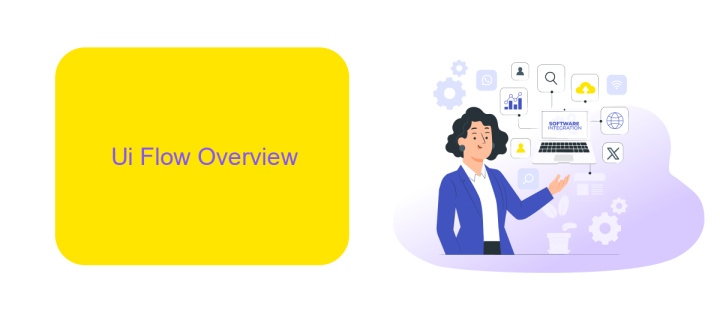Ui Flow Vs UiPath
When it comes to automating business processes, Ui Flow and UiPath are two prominent tools that stand out in the market. Both offer unique features and capabilities designed to streamline workflows and enhance productivity. This article aims to compare Ui Flow and UiPath, examining their strengths, weaknesses, and ideal use cases to help you make an informed decision.
Introduction
In the rapidly evolving landscape of automation tools, Ui Flow and UiPath have emerged as two prominent players. Both platforms offer robust solutions for automating business processes, yet they cater to different needs and preferences. This article aims to provide a comprehensive comparison between Ui Flow and UiPath, helping you make an informed decision on which tool best suits your requirements.
- Overview of Ui Flow and UiPath
- Key features and functionalities
- Integration capabilities with services like ApiX-Drive
- Usability and user experience
- Cost and licensing
Understanding the strengths and limitations of each platform is crucial for optimizing your workflow automation. Whether you are looking for seamless integration capabilities with services like ApiX-Drive or prioritizing user-friendly interfaces, this comparison will guide you through the essential aspects to consider. Stay tuned as we delve deeper into the unique offerings of Ui Flow and UiPath.
Ui Flow Overview

Ui Flow, a part of Microsoft's Power Automate platform, is designed to automate repetitive tasks across various applications and services. It allows users to create workflows by connecting different applications and automating actions based on specific triggers. With a user-friendly interface, Ui Flow enables both technical and non-technical users to streamline their processes without needing extensive coding knowledge. This tool is particularly beneficial for businesses looking to improve efficiency and reduce manual effort in their daily operations.
One of the standout features of Ui Flow is its integration capabilities. Users can connect with a wide range of applications and services to create seamless workflows. For instance, integrating Ui Flow with ApiX-Drive can further enhance automation by enabling more complex data transfers and synchronization between different platforms. This integration simplifies the process of setting up and managing workflows, making it easier for businesses to maintain consistency and accuracy in their operations.
UiPath Overview

UiPath is a leading Robotic Process Automation (RPA) tool that enables businesses to automate repetitive tasks, enhancing productivity and efficiency. With its intuitive drag-and-drop interface, users can create automation workflows without extensive programming knowledge. UiPath is renowned for its robust capabilities in data extraction, process automation, and integration with various applications.
- Drag-and-Drop Interface: Simplifies the creation of automation workflows.
- Data Extraction: Efficiently extracts data from various sources, including PDFs and web pages.
- Integration: Seamlessly integrates with a wide range of applications and services, such as ApiX-Drive, to streamline processes.
- Scalability: Suitable for both small-scale tasks and enterprise-level automation projects.
- Community and Support: Strong community support and extensive documentation to assist users.
UiPath's ability to integrate with services like ApiX-Drive allows businesses to automate data transfers and synchronize information across multiple platforms effortlessly. This integration capability ensures that workflows remain efficient and up-to-date, minimizing manual intervention and reducing errors. Overall, UiPath stands out as a versatile and powerful tool in the RPA landscape.
Comparison

When comparing Ui Flow and UiPath, it's important to understand their core functionalities and how they cater to different automation needs. Ui Flow, now known as Power Automate, is a Microsoft product designed for automating workflows across various applications and services. On the other hand, UiPath is a comprehensive RPA (Robotic Process Automation) platform that focuses on automating repetitive tasks with the help of software robots.
One of the key differences between Ui Flow and UiPath is their target audience. Ui Flow is generally aimed at business users who need to automate simple tasks without deep technical knowledge. In contrast, UiPath is geared towards more complex automation scenarios, often requiring technical expertise and developer input.
- Ui Flow (Power Automate): Best for simple, business-centric workflows
- UiPath: Ideal for complex, enterprise-level automation
- Integration: Both support numerous integrations, but UiPath offers more advanced options
- Ease of Use: Ui Flow is more user-friendly for non-technical users
For businesses looking to streamline their integration processes, services like ApiX-Drive can be invaluable. ApiX-Drive facilitates seamless data transfer between various applications, enhancing both Ui Flow and UiPath's capabilities. Ultimately, the choice between Ui Flow and UiPath depends on the specific needs and technical expertise of the organization.
Conclusion
In conclusion, both Ui Flow and UiPath offer robust solutions for automating business processes, each with its unique strengths. Ui Flow, integrated within Microsoft's ecosystem, provides a seamless experience for users already invested in Microsoft products, making it an ideal choice for those looking to leverage existing tools and services. On the other hand, UiPath stands out with its extensive range of features and user-friendly interface, catering to a broader audience with diverse automation needs.
When considering integration capabilities, services like ApiX-Drive can significantly enhance the automation experience by simplifying the connection of various applications and systems. This can be especially beneficial for businesses looking to create a cohesive workflow without extensive manual intervention. Ultimately, the choice between Ui Flow and UiPath will depend on your specific requirements, existing infrastructure, and long-term automation goals. Both platforms are capable of driving efficiency and productivity, making them valuable assets in the realm of business process automation.
- Automate the work of an online store or landing
- Empower through integration
- Don't spend money on programmers and integrators
- Save time by automating routine tasks
FAQ
What are the main differences between Ui Flow and UiPath?
Which tool is better for integrating with third-party applications?
How do the licensing models of Ui Flow and UiPath compare?
Can both Ui Flow and UiPath be used for attended and unattended automation?
Which platform is easier to learn for beginners?
Apix-Drive will help optimize business processes, save you from a lot of routine tasks and unnecessary costs for automation, attracting additional specialists. Try setting up a free test connection with ApiX-Drive and see for yourself. Now you have to think about where to invest the freed time and money!


